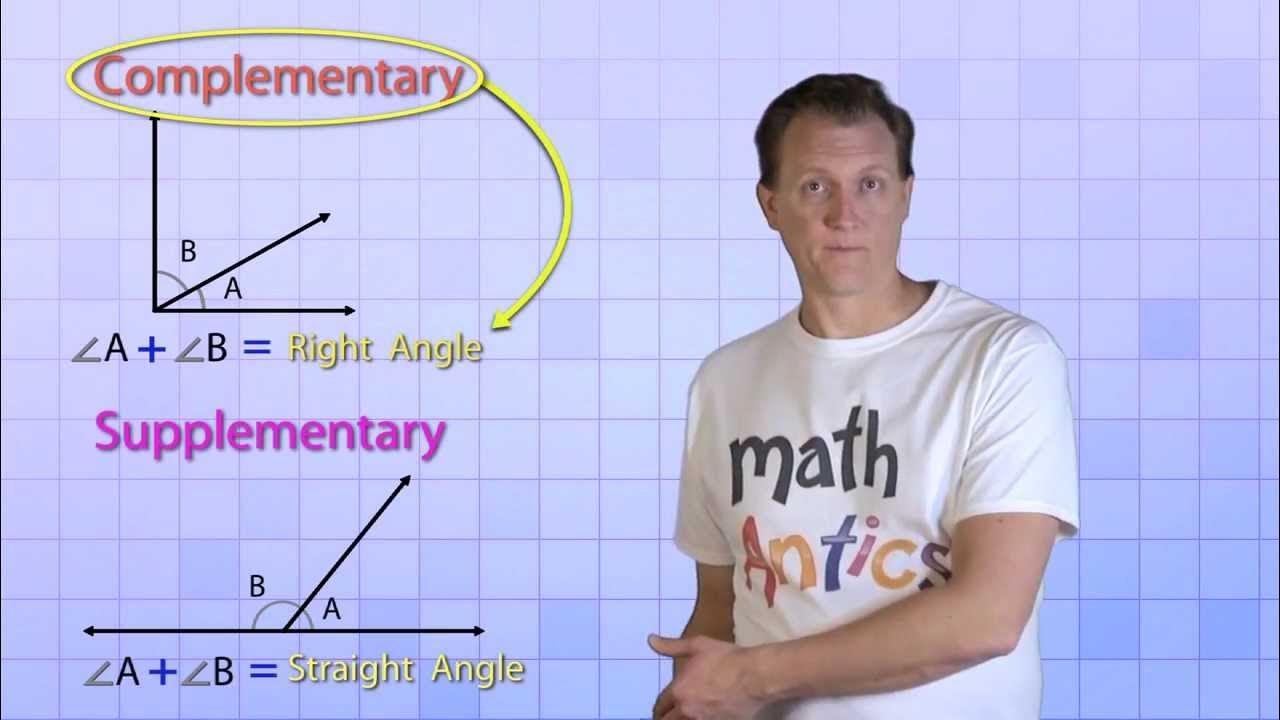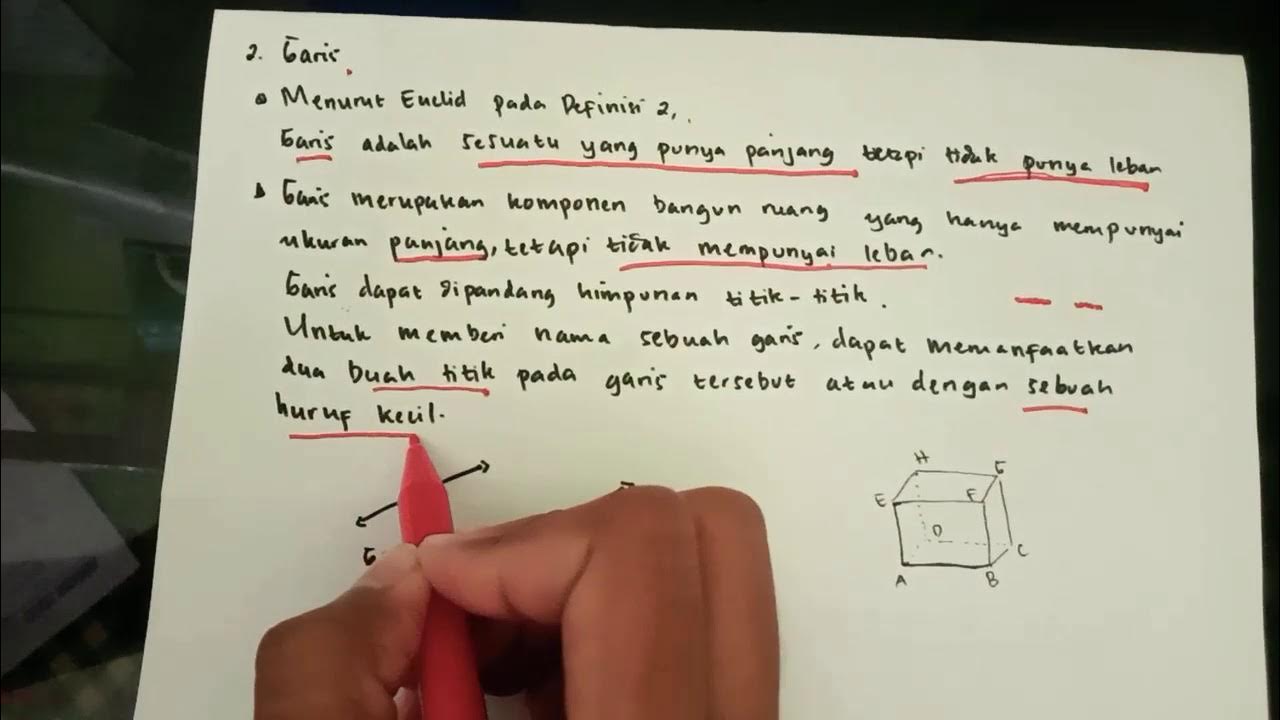Math Antics - Points, Lines, & Planes
Summary
TLDRIn this video, Math Antics introduces the basics of Geometry, focusing on points, lines, and planes. Points are used to describe specific locations in space, while lines are formed by connecting two points. The difference between line segments, lines, and rays is explained, with emphasis on their infinite or finite nature. The concept of planes is also introduced, illustrating how three points can define a flat surface. This video serves as a beginner-friendly guide to foundational Geometry concepts, paving the way for more advanced topics in upcoming lessons.
Takeaways
- 😀 Geometry is the study of lines, shapes, angles, distances, and related concepts.
- 😀 The three basic elements of geometry are points, lines, and planes.
- 😀 A point is the simplest concept in geometry, representing a specific location in space.
- 😀 Points are named for easy identification, usually with single letters (e.g., point A, point B).
- 😀 A line-segment has both a beginning and an end, while a true line extends infinitely in both directions.
- 😀 A ray is a line that has a starting point but extends infinitely in only one direction.
- 😀 In geometry, shorthand notation is used: line-segment AB is written as AB with a line over it, line CD as CD with a double arrow, and ray EF as EF with a single arrow.
- 😀 A plane is a flat, two-dimensional surface that extends infinitely in all directions within its dimensions.
- 😀 Moving along a plane allows movement in two dimensions, whereas a line only allows movement in one direction.
- 😀 A plane is defined by three non-collinear points, and these points can form a triangle, which is a flat surface that represents the plane.
- 😀 Understanding planes, lines, and points in 3D space helps to define volumes and more complex geometric structures, which will be explored in later lessons.
Q & A
What is Geometry?
-Geometry is the study of lines, shapes, angles, distances, and other spatial concepts. It focuses on understanding the relationships between different elements in space.
What are the three basic elements of Geometry introduced in the video?
-The three basic elements of Geometry introduced in the video are points, lines, and planes.
How are points used in Geometry?
-Points in Geometry are used to describe specific locations in space. They represent positions like the end of a line, a corner of a square, or the center of a circle.
Why do we need to name points in Geometry?
-Naming points is essential in Geometry because without names, it would be difficult to identify and reference specific points since they all look the same.
What is the difference between a line-segment and a line?
-A line-segment has a starting point and an ending point, while a line extends infinitely in both directions without an endpoint.
What is a ray in Geometry?
-A ray is similar to a line-segment, but it extends infinitely in one direction, starting from a specific point and going on forever in one direction.
How are lines, line-segments, and rays written in shorthand notation?
-In shorthand, a line-segment is written with a line over the points (e.g., 'AB'), a line is written with double arrows (e.g., 'CD'), and a ray is written with a single arrow (e.g., 'EF').
What is the role of a plane in Geometry?
-A plane in Geometry is a two-dimensional flat surface where points, lines, and other shapes can exist. It has two dimensions: up-down and left-right.
How does a plane relate to three-dimensional space?
-A plane is a two-dimensional surface, whereas three-dimensional space includes the additional 'in-and-out' dimension. A plane is confined to two dimensions, and to move beyond it, you need to enter the third dimension.
How do you define a plane in Geometry?
-A plane in Geometry can be defined by three non-collinear points. By connecting these points, a flat surface (a plane) is formed, which extends infinitely in all directions.
Outlines

This section is available to paid users only. Please upgrade to access this part.
Upgrade NowMindmap

This section is available to paid users only. Please upgrade to access this part.
Upgrade NowKeywords

This section is available to paid users only. Please upgrade to access this part.
Upgrade NowHighlights

This section is available to paid users only. Please upgrade to access this part.
Upgrade NowTranscripts

This section is available to paid users only. Please upgrade to access this part.
Upgrade NowBrowse More Related Video
5.0 / 5 (0 votes)





